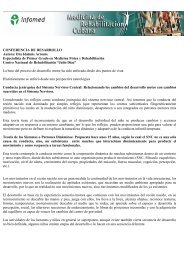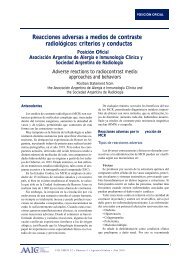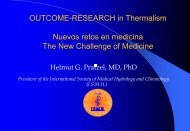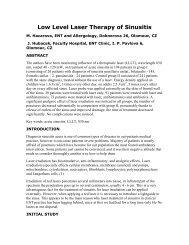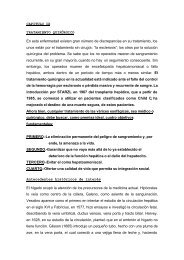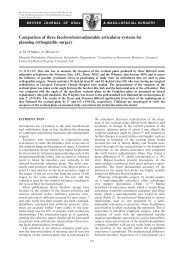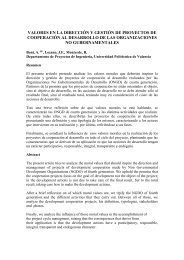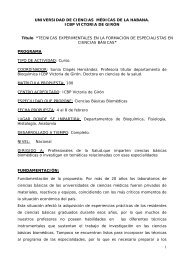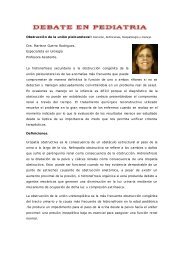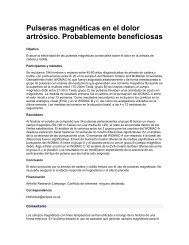Perioperative Anaphylaxis
Perioperative Anaphylaxis
Perioperative Anaphylaxis
Create successful ePaper yourself
Turn your PDF publications into a flip-book with our unique Google optimized e-Paper software.
<strong>Perioperative</strong> <strong>Anaphylaxis</strong> 437<br />
Table 2<br />
Differential diagnosis of anaphylaxis during the perioperative period<br />
All Substances<br />
Succinylcholine<br />
Overdose of vasoreactive substance<br />
Malignant hyperthermia<br />
Asthma<br />
Myotonias and masseter spasm<br />
Arrhythmia<br />
Hyperkalemia<br />
Myocardial infarction —<br />
Pericardial tamponade —<br />
Pulmonary edema —<br />
Pulmonary embolism —<br />
Tension pneumothorax —<br />
Venous embolism —<br />
Sepsis —<br />
Hereditary angioedema —<br />
Mastocytosis —<br />
maneuvers, could suddenly be released into the systemic blood flow following<br />
oxytocin injection. 10 Anaphylactic reactions to antibiotics have also been reported<br />
following removal of a tourniquet during orthopedic surgery. 63<br />
The most commonly reported initial features are pulselessness, difficulty in ventilation,<br />
and desaturation. 9 In the authors’ experience, a decreased end-tidal CO 2 is also<br />
of diagnostic value. In our most recent series, cutaneous symptoms were observed in<br />
66% to 70% of patients in cases of IgE-mediated reactions, whereas they were<br />
present in more than 90% of patients in non–IgE-mediated reactions. 15,16 On the<br />
contrary, cardiovascular collapse and bronchospasm were present in more than<br />
50% and 39% of IgE-mediated reactions but only in 11% and 19% of non–IgE-mediated<br />
reactions, respectively. 15,16 The absence of cutaneous symptoms does not<br />
exclude the diagnosis of anaphylaxis. In addition, clinical features may occur in isolation,<br />
such as a sudden cardiac arrest without any other clinical signs, as was true in 29<br />
of 491 IgE-mediated reactions in our last published survey. 16 A comparison of the clinical<br />
signs observed in IgE-mediated reactions versus non–IgE-mediated reactions<br />
based on the results extracted from the French database of the GERAP is detailed<br />
in Table 3. These results concur with previously published data. 9,10,13 An anaphylactic<br />
Table 3<br />
Clinical signs observed in IgE-mediated reactions compared with non^IgE-mediated reactions<br />
Clinical Signs IgE-Mediated Reactions (%) Non^IgE-Mediated Reactions (%)<br />
Cutaneous symptoms 326 (66.4) 206 (93.6)<br />
Erythema 209 151<br />
Urticaria 101 177<br />
Edema 50 60<br />
Cardiovascular symptoms 386 (78.6) 70 (31.7)<br />
Hypotension 127 50<br />
Cardiovascular collapse 249 12<br />
Cardiac arrest 29 —<br />
Bronchospasm 129 (39.9) 43 (19.5)



